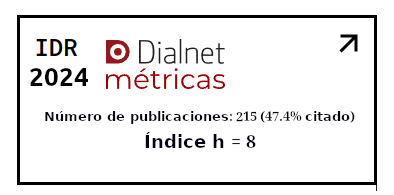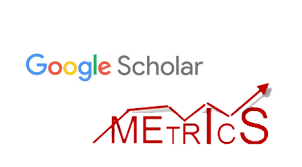Procedure for analyzing employee turnover
Keywords:
labour mobility, human resources, employment planning, personnel management, knowledge managementAbstract
Currently, Human Resources Management shows, without losing the essence of traditional approaches, an increasingly marked orientation towards knowledge and its management. Given the dynamism and complexity of the external environment, organizations have been forced to design human capital processes to act proactively in the face of change. One of the risks to which companies are always exposed is the personnel or employee turnover, a condition that compromises productivity and care against knowledge management. In this sense, the present work aims to design a procedure to contribute to the analysis of staff turnover with an optics towards knowledge management. To achieve this purpose, the causes of the turnover, its effects, among other elements, as well as the mathematical expressions for its determination are investigated until reaching a flexible and easily applied proposal that provides those who develop it with the tools that make it possible deeper study.
Downloads
References
Alshanbri, N., Khalfan, M., Noor, M. A., Dutta, D., Zhang, K., y Maqsood, T. (2015). Employees’ turnover, knowledge management and human recourse management: A case of Nitaqat program. International Journal of Social Science and Humanity, 5(8). https://doi.org/DOI:10.7763/IJSSH.2015.V5.543.
Campos Da Rocha Miranda , R., y Vega Valdés, J. C. (2006). El sistema general de gestión del conocimiento estratégico. Ciencias de la Información Instituto de Información Científica y Tecnológica, 37(2-3), 61-67.
Cascio, W. F. (2000). Managing a virtual workplace. Academy of Management Perspectives, 14(3), 81-90.
Castellanos, J. M., Cuesta Santos, A., García Álvarez, C., y Padilla Méndez, C. (2008). Organización del trabajo: Ingeniería de métodos (Tomo II). Editorial Felix Varela.
Chiavenato, I. (2007). Administración de recursos humanos: El capital humano de las organizaciones. (8 ed.). McGraw-Hill. doi: https://doi.org/DOI1234567890.
Chowdhury Abdullah, A. M., y Nazmul, H. (2017). Factors affecting employee turnover and sound retention strategies in business organization: A conceptual view. Problems and Perspectives in Management, 15(1), 63-71. https://doi.org/doi:10.21511/ppm.15(1).2017.06.
Cuesta Santos, A. (2005). Tecnología de gestión de recursos humanos (2 ed.). Editorial Academia.
Cuesta Santos, A., y Valencia Rodríguez, M. (2010). Indicadores de gestión humana y del conocimiento en la empresa. ECOE Ediciones.
Duda, J., y Žůrková, L. (2013). Costs of employee turnover. Acta Universitatis Agriculturae et Silviculturae Mendelianae Brunensis, LXI(7), 2071-2075. https://doi.org/http://dx.doi.org/10.11118/actaun201361072071.
El Assafiri Ojeda, Y., Nogueira Rivera, D., Medina Nogueira, Y. E., y Medina León, A. (2020). El conocimiento estratégico como factor de alineamiento: Prácticas socioadministrativas para la competitividad, emprendimiento y mercadotecnia digital, una visión desde la licenciatura (pp. 82-105). Universidad Autónoma de San Luis Potosí.
Fidalgo, F., y Borges, L. (2012). Employee turnover impact in organizational knowledge management. The Portuguese Real Estate Case, II(2), 2-16.
Flores, R., Abreu, J. L., y Badii, M. H. (2008). Factores que originan la rotación de personal en las empresas mexicanas. Daena: International Journal of Good Conscience, 3(1), 65-99.
García Sehweret, P. (1987). El salario, sus aspectos sociopsicológicos. La Habana: Editorial Ciencias Sociales.
Gonzales Miranda, D. R. (2009). Estrategias de retención del personal: Una reflexión sobre su efectividad y alcances. Departamento de Organización y Gerencia Universidad EAFIT Venezuela, 45(156), 45-72.
Hom, P. W., Lee, T. W., Shaw, J. D., y Hausknecht, J. P. (2017). One hundred years of employee turnover theory and research. Journal of Applied Psychology, 102(3), 530-545. https://doi.org/http://dx.doi.org/10.1037/apl0000103.
Medina León, A., Nogueira Rivera, D., Salas Álvarez, W., Hernández Nariño, A., Hernández Reyes, H. R., Medina Nogueira, D., Medina Nogueira, Y. E., y El Assafiri Ojeda, Y. (2017). Gestión y mejora de procesos de empresas turísticas. Universidad de UNIANDES.
McKinney, W. R., Bartlett, K. R., y Mulvaney, M. A. (2007). Measuring the costs of employee turnover in Illinois Public Park and Recreation Agencies: An exploratory study. Journal of Park and Recreation Administration, 25(1), 50-74.
North, K., y Kumta, G. (2018). Knowledge management: Value creation through organizational learning (2 ed.). Springer.
O’Connell, M., y Kung, M. C. (2007). The cost of employee turnover. EBSCO´s Industries, 49(1), 14-19.
Ozoliņa Ozola, I. (2017). Employee turnover challenges and management solutions at companies (Doctoral Student of the Study Programme Management Science and Economics). Riga Technical University.
Ponjuán Dante, G. (2006). Introducción a la gestión del conocimiento. Editorial Félix Varela.
Punnoose, R., y Ajit, P. (2016). Prediction of employee turnover in organizations using machine learning algorithms: A case for extreme gradient boosting. International Journal of Advanced Research in Artificial Intelligence, 4(5).
Reinoso, O. L. M., y Fernández, T. V. (2019). Procedimiento para la gestión del proceso de reclutamiento y selección del personal en función del desarrollo local. Cooperativismo y Desarrollo: COODES, 7(2), 225-242.
Schettini, G. A. N., Palomeque, M. B., y Cusme, M. Z. (2019). La disciplina del comportamiento organizacional: estrategia para instituciones universitarias. Revista Cognosis, 4(2), 55-70.
Segarra Ciprés, M., y Bou Llusar, J. C. (2004). Concepto, tipos y dimensiones del conocimiento: configuración del conocimiento estratégico. Revista de Economía y Empresa, 22(52), 175-196.
Stanek, K. (2018). How to calculate turnover rates (accurately). PreValio LLC. https://doi.org/DOI:10.13140/RG.2.2.22686.38722
Zayas Agüero, P. M., y Zayas Feria, J. (2018). Análisis de la fluctuación laboral en una comercializadora mayorista. Revista Caribeña de Ciencias Sociales. http://www.eumed.net/rev/caribe/2018/01/fluctuacion-laboral.html.
Zhao, Y., Hryniewicki, M. K., Cheng, F., Fu, B., y Zhu, X. (2018). Employee turnover prediction with machine learning: A reliable approach. Proceedings of SAI Intelligent Systems Conference, 737-758. https://doi.org/10.1007/978-3-030-01057-7_56.
Published
How to Cite
Issue
Section
License
Copyright (c) 2021 ACADEMO Revista de Investigación en Ciencias Sociales y Humanidades

This work is licensed under a Creative Commons Attribution 4.0 International License.








